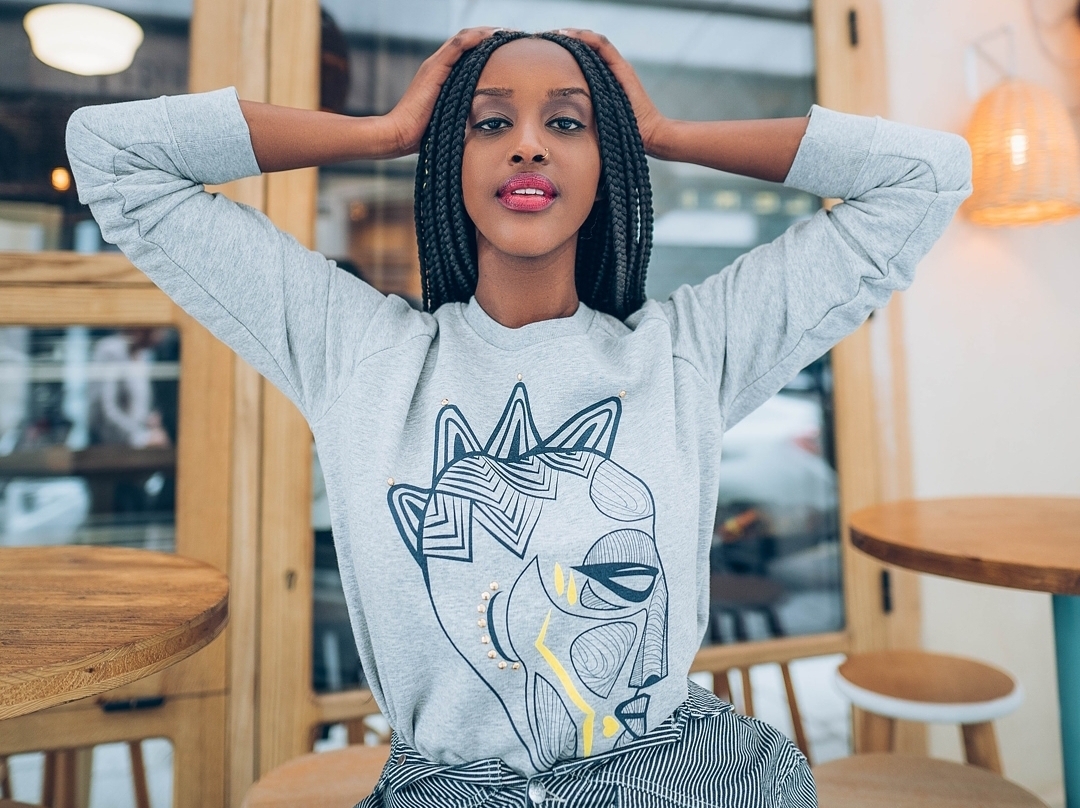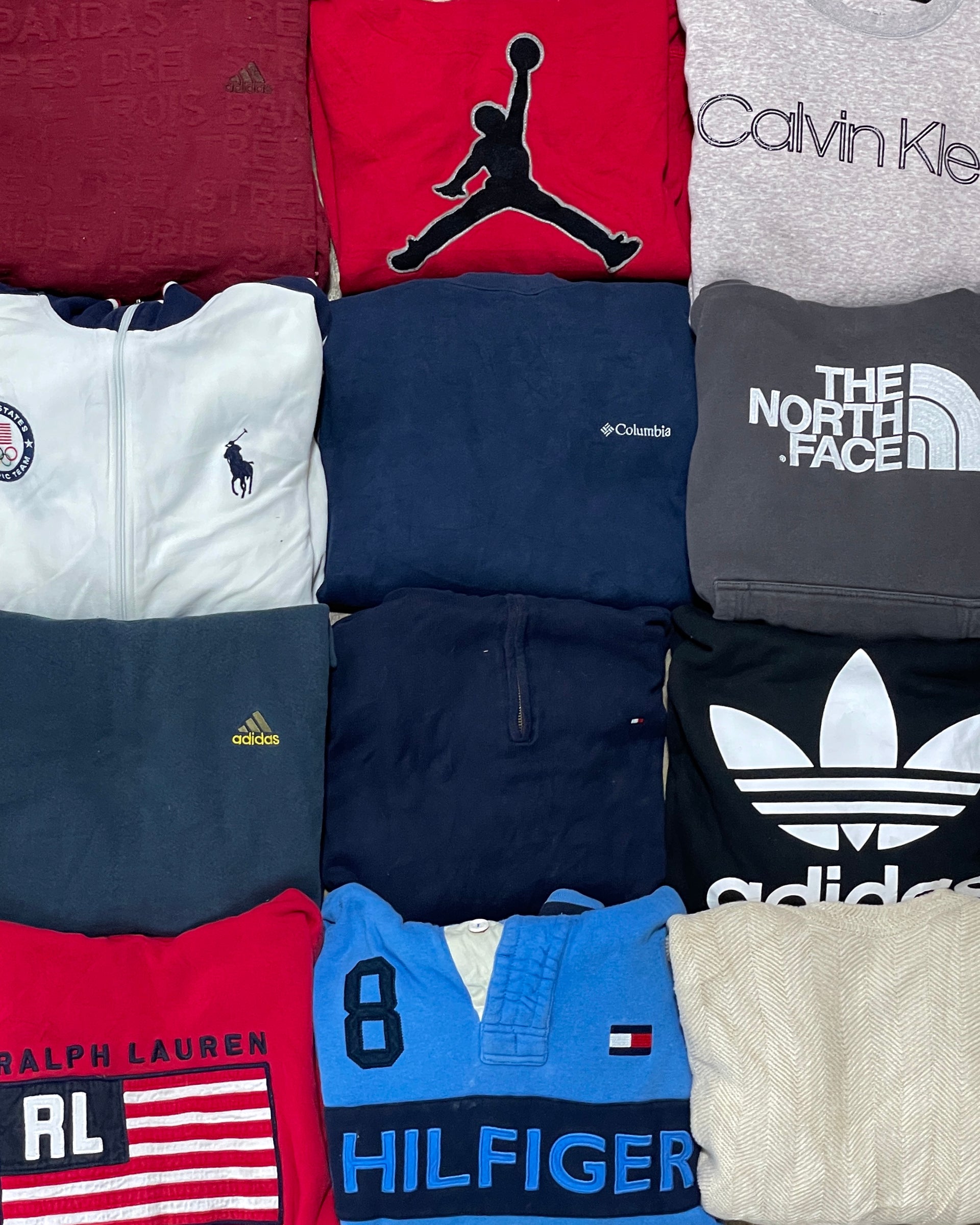How Branded Clothing Can Boost Confidence Through Fabric and Feel
Comprehending Apparel: The Value of Material Selections in Your Wardrobe
The option of textile in apparel plays a critical function in both looks and capability. Different products provide differing degrees of breathability, convenience, and resilience, directly influencing the wearer's experience. Understanding these nuances can boost one's closet substantially. Many neglect how these selections can affect not simply personal design, but also sustainability. What fabric decisions could redefine your wardrobe and straighten it with both design and responsibility?
The Role of Fabric in vogue and Capability

Common Textile Types and Their Attributes
When choosing apparel, understanding the qualities of typical fabric types is important for making informed choices. Cotton, a widely-used all-natural fiber, is known for its softness, flexibility, and breathability, making it suitable for sportswear and everyday garments. Linen, an additional natural alternative, flaunts superb moisture-wicking homes and an unique structure, suitable for warm climates.Wool, frequently favored for its heat and toughness, varies in fineness; merino wool is soft versus the skin, while coarser kinds are utilized for outerwear. Artificial textiles like polyester and nylon offer longevity and resistance to wrinkles, making them prominent for activewear and traveling garments. Finally, blends, which integrate all-natural and artificial fibers, can boost capability while maintaining convenience. By acknowledging these fabric features, people can pick clothing that straightens with their way of life and aesthetic choices.
Breathability and Convenience: Selecting the Right Fabrics for Different Environments
Picking the ideal textiles for different environments can significantly boost convenience and total wearability. Breathable materials are crucial in warm climates, as they enable air flow and dampness dissipation. Fabrics such as cotton, linen, and moisture-wicking synthetics efficiently attract sweat far from the body, keeping the wearer cool and completely dry. Conversely, in colder environments, thicker materials like woollen or fleece offer insulation while preserving breathability, ensuring warmth without overheating.Additionally, the option of textile weight plays an essential role; lightweight fabrics are more effective for summer, whereas heavier options are suited for winter season wear. Understanding the unique properties of each material enables individuals to dress appropriately for varying climate problems. Eventually, selecting comfy and breathable materials tailored to certain environments can considerably improve everyday convenience and enhance the overall experience of wearing garments.
Resilience and Care: How Material Influences Durability of Your Wardrobe
Choosing the appropriate materials can considerably influence the longevity and treatment needs of a wardrobe. Fabrics such as cotton and polyester are known for their durability and convenience of upkeep, making them perfect for day-to-day wear. In comparison, delicate materials like silk and shoelace need more careful handling and specialized cleansing techniques, which can boost the time and initiative needed for care. Branded Clothing.Durability is likewise influenced by the material's weave and coating; firmly woven materials tend to resist deterioration better than loosely woven choices. In addition, artificial blends commonly supply enhanced durability, incorporating the very best top qualities of several fibers.Understanding the care guidelines for each textile is important, as inappropriate drying out or washing can cause premature wear. Inevitably, selecting long lasting materials can cause a longer-lasting wardrobe, minimizing the regularity of replacements and adding to an extra sustainable fashion selection
The Effect of Material on Fit and Silhouette

Lasting Fabric Options: Making Eco-Friendly Decisions
The impact of material expands beyond fit and shape to incorporate ecological elements, motivating a growing passion in sustainable textile choices. Eco-friendly fabrics, such as organic cotton, hemp, and Tencel, are getting grip amongst consumers who prioritize sustainability in their closets. These products are usually created with less chemicals and water, decreasing their environmental footprint.Additionally, recycled materials, made from post-consumer waste, supply a cutting-edge remedy to the textile market's contamination issue. Brands progressively accept transparency in their sourcing methods, enabling customers to Check Out Your URL make enlightened choices about their purchases.Choosing sustainable fabrics not only sustains moral practices yet additionally motivates the apparel industry to adopt more liable production techniques. As recognition of ecological concerns increases, individuals are advised to review the long-term influence of their material selections, cultivating an activity towards a much more eco conscious and lasting strategy to style.
Boosting Design: Just How Material Can Transform an Outfit
While many may concentrate on color and cut when picking a clothing, the choice of material plays an essential duty in raising style and boosting overall appearance. Various materials communicate unique state of minds and messages; for instance, silk emanates deluxe and class, while jeans uses a casual, kicked back vibe. The structure and drape of dig this a textile can substantially change the shape, with structured materials providing a refined appearance and softer ones developing a much more fluid, relaxed aesthetic.Moreover, the weight of the material influences wearability throughout periods. Lightweight textiles like linen and cotton are suitable for summer, while heavier products such as wool and velour offer heat and elegance in chillier months. Comprehending material homes, such as breathability and stretch, likewise empowers individuals to make informed selections that enhance convenience without endangering style. Ultimately, the right material can transform an attire from regular to phenomenal, making it a vital factor to consider in any wardrobe.
Frequently Asked Questions
How Do I Recognize the Textile Content of My Garments?
To recognize textile web content, one can analyze care tags, conduct burn tests for fiber recognition, or consult material swatches. These methods help distinguish products, making certain informed options for clothes treatment and upkeep in everyday wear.
Can Material Option Affect My Mood or Confidence?
Material choice can significantly influence a person's state of mind and self-confidence. Branded Clothing. Certain products may evoke sensations of comfort or beauty, while others can really feel restrictive or uncomplimentary, ultimately affecting self-perception and emotional well-being throughout the day
What Fabrics Are Best for Sensitive Skin?
For people with sensitive skin, all-natural fabrics like cotton, bamboo, and linen are commonly recommended. These products are breathable, hypoallergenic, and much less most likely to trigger irritability, making them suitable choices for comfort and skin wellness.
How Do I Properly Laundry and Take Care Of Different Fabrics?
To appropriately care and wash for different textiles, one must take into consideration each product's details needs, including temperature level setups, detergents, and drying out methods, guaranteeing longevity and preserving the textile's initial high qualities for perfect use.
Are There Details Fabrics for Athletic or Performance Put On?
Sports or efficiency wear typically makes use of fabrics such as nylon, spandex, and polyester. These materials are developed for moisture-wicking, breathability, and flexibility, enhancing motion and convenience throughout exercises while supplying longevity and support. On the other hand, in chillier environments, thicker textiles like wool or fleece give insulation while anchor maintaining breathability, ensuring heat without overheating.Additionally, the choice of fabric weight plays a crucial duty; light-weight materials are more suitable for summer, whereas larger options are matched for winter wear. In contrast, delicate products like silk and shoelace need more mindful handling and specialized cleaning techniques, which can increase the time and effort required for care.Durability is likewise affected by the material's weave and finish; firmly woven textiles tend to resist wear and tear far better than loosely woven alternatives. In contrast, rigid textiles can restrict activity yet provide a timeless, refined look.Moreover, the thickness and texture of the textile can affect the visual assumption of body shape. The influence of textile prolongs beyond fit and shape to include environmental variables, prompting an expanding interest in lasting material choices. The appearance and drape of a textile can substantially modify the shape, with structured fabrics giving a sleek look and softer ones producing a much more fluid, relaxed aesthetic.Moreover, the weight of the textile affects wearability across seasons.